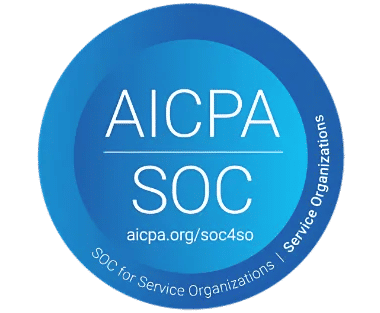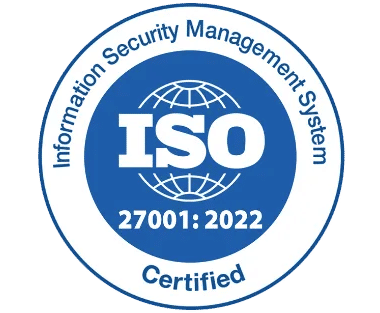What Is Contract Authoring: Process & Best Practices In 2025

Contract authoring is the heart and soul of the contract lifecycle. It is the essential first step that sets the stage for everything that follows creating the foundation for agreements to move forward, negotiations to take shape, and deals to be successfully secured.
But here is the truth: drafting an effective contract is not just about quickly piecing together an agreement. It is about ensuring every detail is accurate, clear, and legally sound. Without a streamlined process, businesses risk errors, delays, and, ultimately, costly disputes.
So, what’s the solution? A robust contract authoring process that incorporates modern tools like AI, templates, and risk mitigation protocols. We will discuss this in detail in our blog post!
What Is Contract Authoring
It is a important phase in the contract lifecycle where agreements are meticulously created, structured, and documented to establish clear terms, obligations, and expectations between parties.
In modern contract workflows, contracts are usually not created from scratch. Instead of starting with a blank page, the people writing the contract whether it is the legal team, sales managers, or business owners use ready-made templates and standard wording to help build the agreement.
This process also involves clearly defining important details, like delivery dates and each party’s responsibilities, which are agreed upon before the contract is finalized and signed.
Why Is Contract Authoring Important?
Effective authoring of contracts goes beyond simply drafting agreements. Here is why it is important.
1) Provides Clarity to The Team
It ensures a clear and transparent understanding between all parties involved. By outlining each party’s rights, responsibilities, and expectations, it reduces the risk of conflicts and creates a solid, legally binding framework that safeguards everyone’s interests.
2) Serves as a Reference
A clearly written contract serves as a crucial reference in case of disputes. If disagreements occur, the contract acts as a guide to resolving the issue, helping both parties find the most appropriate course of action based on the original terms.
This approach saves time, resources, and ensures that resolutions remain aligned with the initial intent.
3) Provides Assurance
By formalizing agreements in writing, contract authoring tool gives businesses peace of mind. It creates a legally enforceable document that holds all parties accountable, offering more security than verbal agreements.
The ability to transfer data between documents further streamlines the process, ensuring accuracy and reducing uncertainty.
4) Reduces Risks
It helps to proactively manage risks. By addressing potential concerns such as liability, indemnification, and intellectual property rights contracts provide a structured approach to allocate and handle risks, minimizing the chance of issues down the line.
5) Facilitates Better Communication
The process fosters open communication and negotiation. Both parties could discuss and refine terms, ensuring the agreement aligns with their needs and expectations. This promotes a cooperative, mutually beneficial partnership between them.
Who Is Responsible for Authoring a Contract?
Authoring a contract is a task that requires great care and expertise, and it is best undertaken by legal professionals, such as experienced lawyers or contract specialists, who possess in-depth knowledge of contract law.
By entrusting the task to these skilled professionals, you ensure that the contract will effectively capture the intentions of all parties involved. It will also comply with relevant laws and regulations, minimizing any risk of legal issues down the road. Furthermore, their expertise protects the interests of everyone involved, creating a solid foundation for successful and mutually beneficial agreements.
In summary, when it comes to agreement authoring, turning to legal professionals with the right knowledge and experience is the best way to ensure that your agreements are both legally binding and fair to all parties.
How Does the Contract Authoring Process Work?
The authoring an agreement is one of the most crucial yet often overlooked aspects of business operations. It is more than just a formality; it is the foundation upon which relationships whether with clients, vendors, or partners are built. Done right, contract authoring can prevent misunderstandings, save time, and protect all parties involved from potential legal troubles.
Step 1: Understand the Purpose and Scope
The first step in the contract authoring process is clarity. Understanding the purpose of the contract is essential. What is the agreement meant to achieve? Who are the parties involved? What is the scope of work or the terms of the deal?
To make sure everything is aligned, the author needs to ask:
- What are the key objectives of the contract?
- What does each party need from this agreement?
- What are the boundaries, terms, and conditions that will govern the relationship?
This initial step is about laying the foundation. It sets the pace for everything that follows. After all, the clearer you are at the beginning, the less room there is for unclear terms later.
Step 2: Drafting the Terms and Conditions
Now that you know the purpose, it’s time to draft the terms and conditions. This is the heart of any contract and where the magic happens. Think of this as the framework that will govern the relationship. The terms and conditions provide the structure that defines responsibilities, deliverables, timelines, payment schedules, and more. Be concise yet comprehensive. Every clause should be specific enough to avoid confusion.
Some key elements to include are;
- Set clear deadlines for deliverables and completion.
- Define what needs to be kept private
- Clearly define the payment schedule and method to ensure transparency for both parties.
In drafting, clarity is everything. Avoid jargon. Create the contract easy to read and grasp. After all, if both parties can clearly comprehend the terms, there’s a greater likelihood that they’ll abide by them.
Step 3: Negotiation
Contracts are rarely one-sided. After drafting the initial terms, it’s time to open the door to negotiation. This phase is crucial in ensuring that both parties feel heard, respected, and fairly treated.
A well-negotiated contract is not about compromise; it’s about identifying a mutually beneficial solution that satisfies the needs of both parties.
Negotiation should be viewed as a collaborative process, not a confrontation. The objective is to reach an agreement that aligns with the interests of both sides, ensuring that neither party feels disadvantaged.
Step 4: Review the agreement
Once the terms are set, don’t rush. Take the time to review the contract thoroughly. This is the stage where you identify potential issues, inconsistencies. Bring in professionals whether it is an in-house legal team or external lawyers to review the document.
Key areas to review include:
- Accuracy of terms
- Compliance with applicable laws and regulations
- Dispute resolution processes
- Completeness of all clauses
Step 5: Finalize and Execute
The final step in the agreement authoring is executing the contracts. This is where the rubber meets the road. The contract is now ready for signatures. Ensure that all parties have access to the document and understand their responsibilities. The signature signifies commitment, a mutual understanding, and the formal beginning of the agreement.
At this point, the contract is no longer just a document it becomes a binding, enforceable agreement. It provides the legal foundation for your relationship with the other party.
Challenges Faced During Contract Authoring
Most of the processes follow a similar structure, and as a result, they often come with the same set of challenges. These challenges, while common, can slow down operations, introduce risk, and make it difficult to maintain consistency.
1) Time-consuming
Drafting agreements from scratch and manually entering details is not only tedious but also a drain on valuable resources. For lean legal teams, managing this workload efficiently becomes a significant challenge.
2) Lack of Control Over Drafts
When business teams create agreements without legal oversight, there is little control over the terms used, leading to inconsistencies and potential risks.
3) Risk of Human Error
As with any manual process, mistakes happen. Copying and pasting from existing documents increases the likelihood of inaccuracies oversights that can result in costly disputes or delays.
4) Inability to Scale Effectively
As an organization expands, so does the volume of agreements. A manual drafting process becomes a bottleneck, making it harder to keep pace with demand while ensuring accuracy and compliance.
5) Lack of Real-Time Visibility
Without a structured system in place, tracking agreements at various stages drafting, review, approval, and execution becomes a challenge. This can lead to delays, missed deadlines, and inefficiencies that disrupt business operations.
While these issues are common, they do not have to be the norm. With the right tools and processes, organizations can streamline agreement creation, reduce risk, and build a foundation for growth with confidence.
Best Practices for Contract Authoring
Every great contract is built on clarity, precision, and foresight. It is not just about putting words on agreements it is about crafting agreements that protect interests, minimize risks, and drive business forward. A well-structured contract prevents misunderstandings, streamlines execution, and strengthens professional relationships. Follow these best practices to ensure your authoring process is efficient, airtight, and future proof.
1) Establish a Clear Objectives
Every contract exists to serve a specific purpose. Before you start drafting in your preferred digital contract management, take a step back and ask:
- What is the contract meant to accomplish? Define its core function. Is it a service agreement, a sales contract, a partnership deal, or something else?
- What are the key deliverables or obligations? Make sure both parties are aligned on expectations from the outset.
- What risks need to be addressed? Consider potential disputes, missed deadlines, payment issues, or legal liabilities.
A contract is only as strong as its foundation. If the intent isn’t clearly defined from the beginning, the entire agreement can become a liability rather than an asset.
2) Use Simple, Direct Language
Legal jargon does not make a contract stronger clarity does. Overly complex sentences lead to misinterpretation and confusion. Contracts should be authored in plain, language that leaves no room for doubt.
- Use straightforward terms without unnecessary legalese.
- Avoid vague phrases like “as soon as possible” or “reasonable effort.”
- Define all key terms explicitly to ensure consistent understanding.
3) Structure the Contract for Easy Navigation
A well-organized contract improves comprehension and reduces the risk of oversight. Break it into logical sections with clear headings and numbered clauses. This ensures key information is easy to locate.
- Include a table of contents for lengthy contracts.
- Use bold section headings and bullet points where applicable.
- Keep clauses in a logical order, progressing from general to specific details.
4) Define Payment Terms
Payment terms are important in any financial agreement. This section should explicitly outline how and when payments will be made, ensuring that all parties agree on the financial structure before signing the contract.
A well-defined payment structure should include:
- Clearly state the total amount due, along with any applicable taxes, surcharges, or service fees.
- Indicate whether payments are made upfront, upon completion, or in installments.
5) Maintain a Centralized Repository
An organized contract system enhances efficiency, ensures compliance, and keeps agreements easily accessible. A centralized repository takes contract authoring workflow to the next level, making the process smoother and more reliable.
- Store all contracts in a central system for quick access, seamless collaboration, and data protection.
- Advanced search functions let you retrieve contracts, key clauses, and important details in seconds.
- Automated version tracking ensures accuracy and eliminates confusion.
How Effective Contract Authoring Transforms Business?
Behind every thriving business lies a foundation of rock-solid agreements. Contracts aren’t just legal documents; they are the glue that holds partnerships together, the guardrails that keep businesses on track, and the catalyst for seamless operations. Leveraging contract authoring tool transforms chaos into clarity, risk into security, and inefficiency into streamlined success. Here is how.
1) Standardized Contracts
A structured contract authoring tool ensures consistency across all agreements, eliminating discrepancies and confusion. When terms are clearly defined and uniformly applied, negotiations become smoother, approvals happen faster, and costly misunderstandings are avoided. A standardized approach builds trust and ensures every deal moves forward with clarity and confidence.
2) Stronger Protection To Contracts
Business risks often hide in vague clauses and overlooked details. A well-drafted authoring process anticipates potential challenges, mitigates liabilities, and strengthens legal safeguards. By closing loopholes and defining obligations precisely, businesses can prevent disputes, reduce financial exposure, and operate with greater security.
3) Efficiency That Saves Time and Resources
Delays in contract approvals and revisions slow down business growth. An optimized authoring workflow minimizes back-and-forth negotiations, simplifies approval processes, and ensures clarity in every clause. By reducing inefficiencies, businesses can focus on execution rather than administrative hurdles, driving faster and more effective decision-making.
4) Improved Collaboration and Stronger Partnerships
Contracts do more than outline terms they strengthen relationships. Transparent process fosters trust among stakeholders, improves communication, and creates a foundation for long-term partnerships. When expectations are clear, cooperation becomes seamless, and business relationships thrive.
5) Compliance Without Complication
Regulations are constantly evolving, and non-compliance can cost your business more than just money it can cost its reputation. Using contract authoring tool ensures that every contract meets the latest legal requirements without adding unnecessary complexity. It keeps your business compliant, protected, and ahead of the curve.
Making Contract Authoring Efficient with CLM 365
CLM 365, a Microsoft-certified solution, improves contract authoring by integrating MS Outlook, MS Teams and SharePoint and advanced drafting capabilities enabling organizations to create, manage, and execute contracts with greater accuracy, efficiency, and compliance, all within the trusted Microsoft ecosystem.
Conclusion
Every contract tells a story of commitment, clarity, and progress. With CLM 365, organizations don’t just create agreements they establish a foundation for seamless collaboration, operational efficiency, and sustained growth, ensuring that every contract is a strategic asset in a world that moves faster than ever.
Experience seamless contract authoring. Get started with CLM 365 today.
Frequently Asked Questions
What is the difference between contract authoring and contract drafting?
Contract authoring is a broader term that encompasses the entire process of creating a contract, including collaboration, clause selection, review, and approval. Contract drafting specifically refers to the initial stage of writing the contract’s terms and conditions.
What is a contract author?
A contract author is a person responsible for creating, structuring, and writing a contract, ensuring it aligns with legal, business, and compliance requirements before approval and execution.
What are common mistakes in contract authoring?
Mistakes include unclear language, missing clauses, lack of legal review, and failure to specify dispute resolution strategies.
What are the key components of a well-authored contract?
It clearly outlines objectives, specifies obligations, incorporates essential legal terms, includes standard clauses, and establishes dispute resolution procedures.









_svxLrd-8yH.png)

_2VYSFUTN5m.png)

_JiluXJRGNl.svg)

_2djTKNocf.png)





_Rapo0hRMBy.png)

















